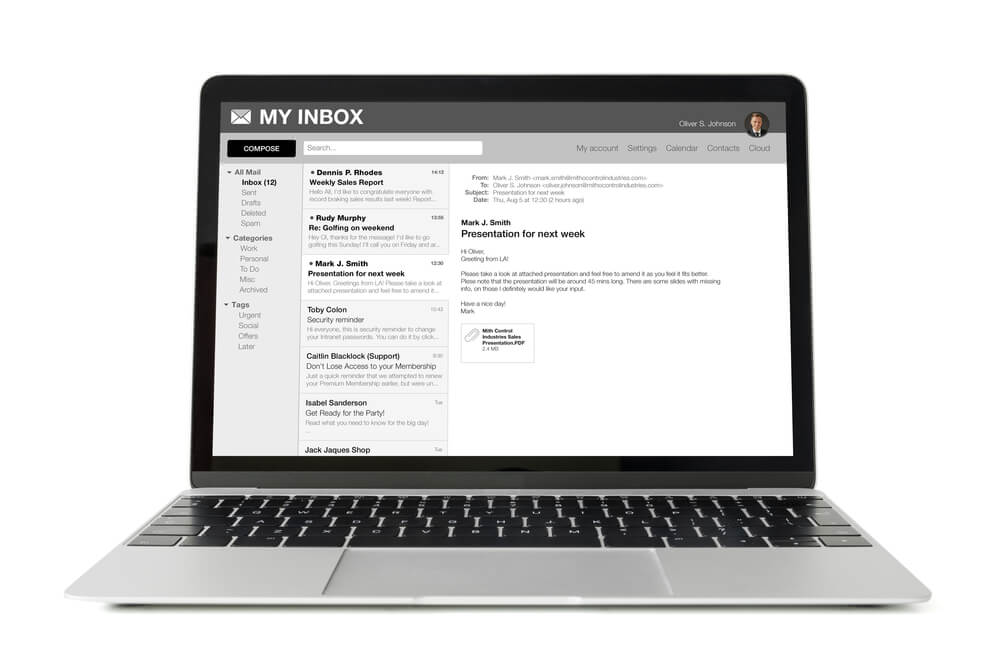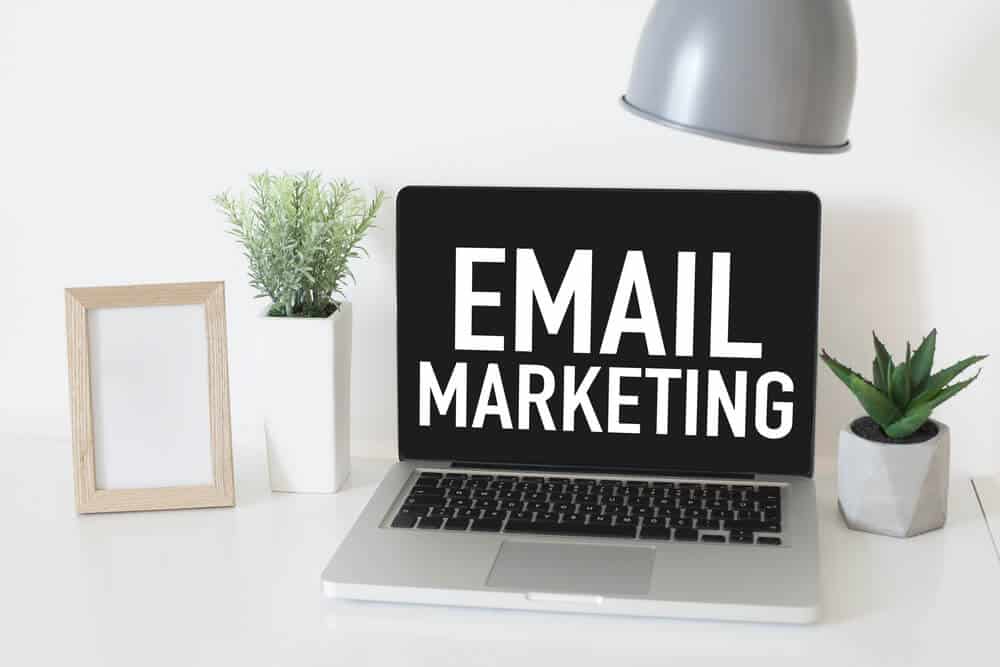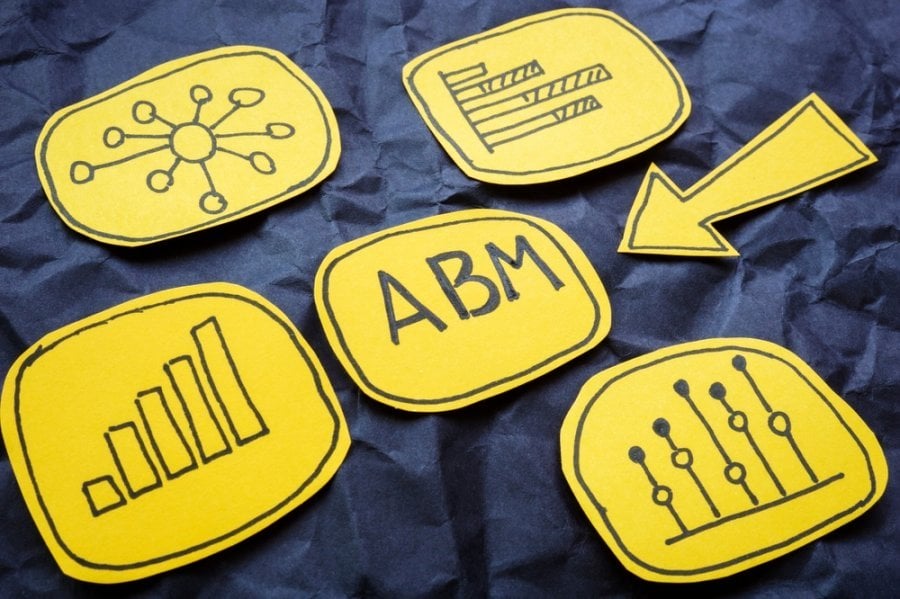
What Times Are Best to Send B2B Email Marketing Posts? (Tips)
It’s hard enough to craft an email that gets clicks and converts recipients to appointments and customers. Ensure your effort pays off and you get the clicks and closes your email deserves by sending your email at the right time of day.
Believe it or not, what time you send your marketing emails can matter a great deal. You can identify the more productive times by:
 So how much does the time of day matter when it comes to B2B email marketing?
People tend to adopt predictable routines. Most bagels are eaten in the morning and most steaks in the evening. Marketing a bagel as part of a steakhouse experience does not fit the general daily routine and is not likely to attract a large population. Advertising for your steakhouse is probably best done when you can anticipate people leaving work, hungry for dinner.
Something else you can anticipate is when the most people are checking their email — and, in the case of B2B email marketing, checking their work email. If your email pops into the inbox at peak email-checking time, it has a greater chance of being seen, avoiding getting buried under an avalanche of other emails.
So what is the best time to send B2B marketing emails? Hubspot conducted a study that found that for US senders, the highest rate of opens fell between 9am and 12pm EST, with 31% of all email opens happening in that time frame.
What about earlier? The 6am-9am window drops down to 20% of all openings. Later? The 12pm-3pm window? 26%. Then it’s down to 13% from 3pm-6pm and single digits at every other time.
Nearly a third of all opens happen within one three-hour window (nine to noon eastern). Whether or not those opens translate to conversions is another matter, but that statistic is worth your attention.
Does that mean you should schedule all of your B2B marketing emails? Not necessarily. You might have an outlier business whose prospects only check their email in the afternoon, or your major contract may be on the other side of the world.
Dozens of other variables can affect the quality of different sending days and times, and this only considers clicks, not conversions. Bottom line — this is going to take some testing and refining. Here are some tips for zeroing in on the best sending times and dates for your B2B email marketing campaign:
So how much does the time of day matter when it comes to B2B email marketing?
People tend to adopt predictable routines. Most bagels are eaten in the morning and most steaks in the evening. Marketing a bagel as part of a steakhouse experience does not fit the general daily routine and is not likely to attract a large population. Advertising for your steakhouse is probably best done when you can anticipate people leaving work, hungry for dinner.
Something else you can anticipate is when the most people are checking their email — and, in the case of B2B email marketing, checking their work email. If your email pops into the inbox at peak email-checking time, it has a greater chance of being seen, avoiding getting buried under an avalanche of other emails.
So what is the best time to send B2B marketing emails? Hubspot conducted a study that found that for US senders, the highest rate of opens fell between 9am and 12pm EST, with 31% of all email opens happening in that time frame.
What about earlier? The 6am-9am window drops down to 20% of all openings. Later? The 12pm-3pm window? 26%. Then it’s down to 13% from 3pm-6pm and single digits at every other time.
Nearly a third of all opens happen within one three-hour window (nine to noon eastern). Whether or not those opens translate to conversions is another matter, but that statistic is worth your attention.
Does that mean you should schedule all of your B2B marketing emails? Not necessarily. You might have an outlier business whose prospects only check their email in the afternoon, or your major contract may be on the other side of the world.
Dozens of other variables can affect the quality of different sending days and times, and this only considers clicks, not conversions. Bottom line — this is going to take some testing and refining. Here are some tips for zeroing in on the best sending times and dates for your B2B email marketing campaign:
- Analyzing your audience’s behavior.
- Taking into account industry specifics.
- Testing and refining.
- Trying different times and days.
- Factoring in time zones for global audiences.
Tired of investing in Search Engine Optimization without getting any results? See how Digital Authority Partners turns that around!
Understanding the Impact of Timing in B2B Email Marketing
 So how much does the time of day matter when it comes to B2B email marketing?
People tend to adopt predictable routines. Most bagels are eaten in the morning and most steaks in the evening. Marketing a bagel as part of a steakhouse experience does not fit the general daily routine and is not likely to attract a large population. Advertising for your steakhouse is probably best done when you can anticipate people leaving work, hungry for dinner.
Something else you can anticipate is when the most people are checking their email — and, in the case of B2B email marketing, checking their work email. If your email pops into the inbox at peak email-checking time, it has a greater chance of being seen, avoiding getting buried under an avalanche of other emails.
So what is the best time to send B2B marketing emails? Hubspot conducted a study that found that for US senders, the highest rate of opens fell between 9am and 12pm EST, with 31% of all email opens happening in that time frame.
What about earlier? The 6am-9am window drops down to 20% of all openings. Later? The 12pm-3pm window? 26%. Then it’s down to 13% from 3pm-6pm and single digits at every other time.
Nearly a third of all opens happen within one three-hour window (nine to noon eastern). Whether or not those opens translate to conversions is another matter, but that statistic is worth your attention.
Does that mean you should schedule all of your B2B marketing emails? Not necessarily. You might have an outlier business whose prospects only check their email in the afternoon, or your major contract may be on the other side of the world.
Dozens of other variables can affect the quality of different sending days and times, and this only considers clicks, not conversions. Bottom line — this is going to take some testing and refining. Here are some tips for zeroing in on the best sending times and dates for your B2B email marketing campaign:
So how much does the time of day matter when it comes to B2B email marketing?
People tend to adopt predictable routines. Most bagels are eaten in the morning and most steaks in the evening. Marketing a bagel as part of a steakhouse experience does not fit the general daily routine and is not likely to attract a large population. Advertising for your steakhouse is probably best done when you can anticipate people leaving work, hungry for dinner.
Something else you can anticipate is when the most people are checking their email — and, in the case of B2B email marketing, checking their work email. If your email pops into the inbox at peak email-checking time, it has a greater chance of being seen, avoiding getting buried under an avalanche of other emails.
So what is the best time to send B2B marketing emails? Hubspot conducted a study that found that for US senders, the highest rate of opens fell between 9am and 12pm EST, with 31% of all email opens happening in that time frame.
What about earlier? The 6am-9am window drops down to 20% of all openings. Later? The 12pm-3pm window? 26%. Then it’s down to 13% from 3pm-6pm and single digits at every other time.
Nearly a third of all opens happen within one three-hour window (nine to noon eastern). Whether or not those opens translate to conversions is another matter, but that statistic is worth your attention.
Does that mean you should schedule all of your B2B marketing emails? Not necessarily. You might have an outlier business whose prospects only check their email in the afternoon, or your major contract may be on the other side of the world.
Dozens of other variables can affect the quality of different sending days and times, and this only considers clicks, not conversions. Bottom line — this is going to take some testing and refining. Here are some tips for zeroing in on the best sending times and dates for your B2B email marketing campaign:
1. Analyzing Your Audience’s Behavior
No two audiences are exactly alike. To determine when your marketing emails are the most effective, you are going to have to observe your audience’s unique behavior. Try to understand their most common activity cycles — what time they wake up, when they drop their kids off, when they go to the gym, when they clock in at work, etc. Fortunately, emails are written and sent in the digital world, so everything part of the transaction can be tracked. Many email autoresponders and analytical tools can keep track of every interaction your audience has with each email. You don’t have to guess what time the recipients open emails — your back-end analytics can tell you at what time the most opens, responses, and clicks happen, as well as what sending time produces the most interactions.2. The Role of Industry Specifics
One of the reasons you should not just blindly follow Hubspot’s 9am-12pm window is because different industries have different quirks and characteristics. Your market might have a completely different time frame of maximum conversion. The finance industry, for example, notoriously has to do prep work before markets open, so finance industry professionals might be starting their day and checking their email significantly earlier in the morning. Healthcare professionals tend to have irregular schedules. You may find more openings and conversions in the afternoon or even at night. The legal industry might have peak open hours early in the morning or late at night, while the retail industry might have peak hours that need to be avoided.3. Testing and Refining Email Timing
Like every aspect of your B2B email marketing campaigns, the timing of your sends needs to be tested and refined. You split-test subject lines, body copy, calls to action, and offers; split test sending times as well. Once you find a winning time, split test it against other times. Find the best times, and watch for any changes in recipient behavior. You may actually find several productive send times, possibly coinciding with lunch breaks and other daily milestones. You may also find that certain times produce more opens, other times more clicks, and still other times more sales conversions and appointments. You can even craft different strategies to cater to the strengths of these time slots.4. Weekdays vs. Weekends: Understanding the Differences
It is not just time of day that impacts your sends; the day of the week matters too. Some studies have shown Mondays and Fridays to be less effective days for B2B marketing emails, but you should test that assumption as well — you might be the outlier who does the most business on a Friday. So should you send B2B marketing emails on the weekends? The intuitive answer is that weekends will be the least-effective sending times. However, the busy decision-makers you want to reach may take their work home with them where they may have less urgent demands on their time. This may be the perfect time for them to consider the long-term implications of your offer. Again, you won’t know until you test!5. Considering Time Zones for Global Audiences
If you have a global audience, it may be worth setting different send times for different time zones. Keep in mind, too, that work start times, times of maximal productivity, and break times might be different in other countries and cultures. Just because a particular time works in Chicago does not mean it will work equally well in Tokyo. You can often schedule your marketing email to stagger its sends to go out at the same time in every time zone. However, if you are running a split test on other variables (subject line, CTA, etc.) you usually can’t stagger the sending times, since the autoresponder needs a compressed period of time to declare a winner for the A/B test.Summing Up
Email marketing is one of the most cost-effective ways to reach your audience. Entire businesses are built on the back-end thanks to email lists; for the most successful businesses in the world, that’s where the real profit is made. It doesn’t cost any extra to send your B2B marketing emails at a more productive time vs. a less productive time. Need help finding the right time to send your B2B marketing emails? DAP can help you make a data-driven decision. Contact us to get started and learn more about our B2B email marketing agency!Want To Meet Our Expert Team?
Book a meeting directly here



